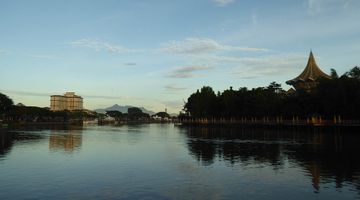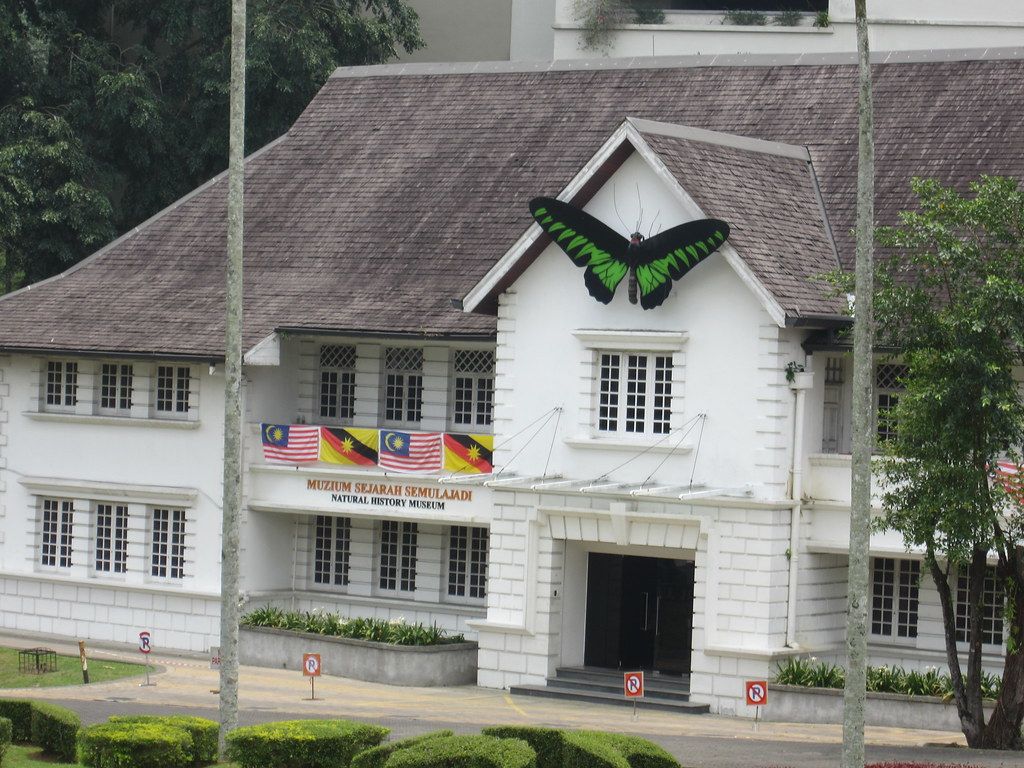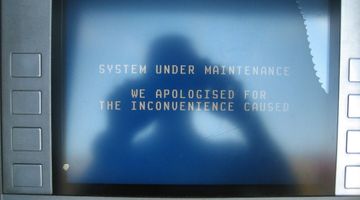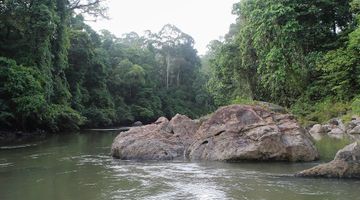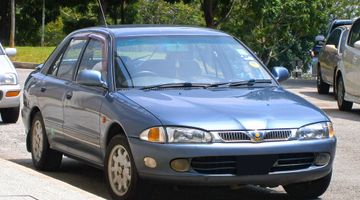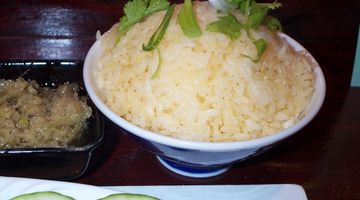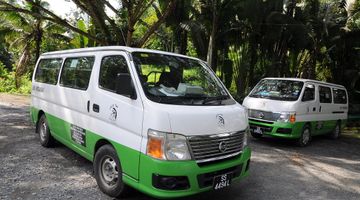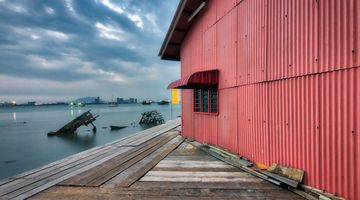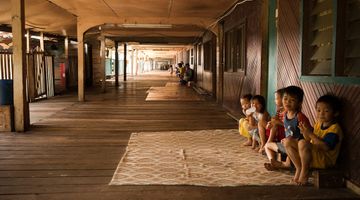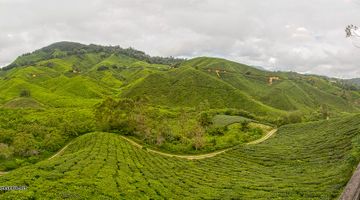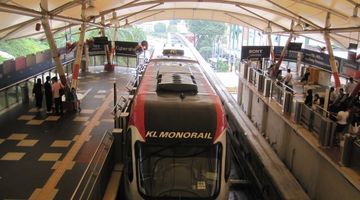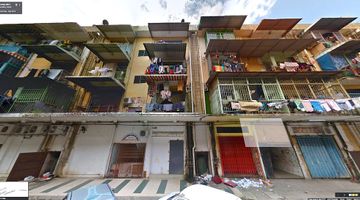Kuching Travel Guide
In a nutshell
Kuching is the capital of Sarawak in Malaysia and is a popular spot with tourists looking to enjoy what the city itself has to offer, as well as all of the nearby nature and wildlife. Previously part of the Sultanate of Brunei, it’s a safe, friendly and very multicultural city with plenty to see and do.
Why go to Kuching
Whether you want to learn more about the local area by exploring Kuching’s museums and cultural sites or want a more active trip that involves trekking and jungle camps, you’re sure to find just what you’re looking for.
There is everything from spas and handicraft demonstrations to cooking classes and tribal experiences available for tourists to enjoy – you can even get a traditional Sarawak tattoo if that happens to take your fancy. Many choose to take time to learn about traditional ways of life in the area, particularly the community and culture of the ‘longhouses’ many lived in. Therefore there are several cultural villages and even adventure tours that allow you to experience this type of lifestyle.
Nature lovers tend to head for the jungle, where they can learn more about Kuching’s fauna and flora. There are many jungle expeditions which include various boat trips, camping and hiking adventures – giving you the best opportunity to see wildlife, including the famous Bornean orangutans. There’s also a lot to do for those who are looking for a more action packed itinerary, such as kayaking, zip-lining, motorcross and adventure biking, amongst other adrenalin pumping activities.
When to go to Kuching
Like most areas in Borneo, the weather is generally pleasant all year round, meaning that no months are off limits when it comes to tourism.
The most popular, and warmest, time to visit Kuching is between March and October. As a tropical destination, rain and storms can happen at any time, but tend to occur the most frequently between November and February. Many festivals are celebrated here, so it’s worth checking the calendar before your trip to make sure everything will be open for business as usual.
Where to stay in Kuching
There is a lot of choice when it comes to accommodation in Kuching, and the tourist infrastructure is well established. As mentioned, businesses can slow down or close up around the time of specific festivals, so if you are visiting at Chinese New Year, for one example, it’s definitely worth booking your accommodation well in advance, rather than running the risk of turning up and not having the options you might like. In the high end and luxury bracket there are several good options, some of which are well located near to shopping centres whilst others feature attractive colonial style architecture or great city views.
The budget end of the spectrum is particularly well represented, with many hostels offering great deals on dorms or private rooms. Wifi is generally included, although can be patchy, and often there will be a free breakfast and towels available. Best of all, a thriving backpacker scene means that many budget guesthouses and hostels are staffed by friendly teams who can help you to organise any activities you might want to plan into your visit at the best possible prices.
Where to eat in Kuching
There is also some great food on offer in Kuching. Many different cultures co exist in the city, from the Chinese to Malays to all sorts of other nationalities, meaning there are plenty of different cuisines to sample on your trip. If you have any dietary requirements it’s worth being aware of the fact that the cultural norms differ a fair bit in some ways when it comes to food - for example, Chinese restaurants often serve non-Halal meat. It can be a tricky destination for vegetarians as well, so do check carefully with restaurant staff for ingredients like fish sauce and chicken stock.
The local cuisine in Kuching is quite different from other parts of Malaysia so there will be plenty of new dishes for you to try. These range from menu items like sarawak laksa to kolok mee, all the way through to more obscure raw fish salads, spicy porridge and jungle ferns. It’s always worth keeping an open mind and being adventurous to have the best foodie experience in Kuching!
How to get around Kuching
With a population estimated around 600,000, Kuching isn’t a small city but it’s still easy to get around and there are plenty of modes of transportation available.
There are regular city buses, which are bright green and very recognisable, although you’ll probably need to double check with locals to confirm the routes and the timetables are fairly random so this isn’t always a tourist favourite. Similarly the shuttle vans, identified by their yellow roof, also run around the city across various routes - most of which are marked on the side or front of the vehicle.
An easier option is to use taxis to get around. Uber is recently present in the city and makes it a lot easier to organise a cab without having to waste time arguing about meters or fares, and this is by far the simplest way to get around Kuching. It’s also pretty cheap, often cheaper than regular taxis who may have a tendency to charge travellers more than local rates might be.
Alternatively, there are many car hire firms available, although be very careful if you choose this option as driving standards are extremely different from more developed countries. The same applies if you decide to rent a motorbike.
How to get to and from Kuching
Sarawak has its own immigration policies so you may need to get a visa on arrival – whilst this can make getting in a little more time consuming, it’s not altogether too difficult.
The airport at Kuching is well connected, with frequent domestic flights to and from locations like Kuala Lumpur, Kota Kinabalu, Penang and Kota Bharu, amongst others.
Air Asia, Malaysia Airlines and Malindo Air are the standard operators on most of these routes. Internationally, there are only flights from Singapore and Pontianak in nearby Indonesia.
Some choose to access the city by boat and there are daily services to and from Sibu that take around 5 to 6 hours.
There are both regional and long distance buses covering the area, and it’s easy to reach by bus from neighbouring Indonesia and Brunei if you are leaving from one of these countries or headed there after your time in Sarawak. Buses run frequently from the main bus stations to other destinations including Bako National Park, Lundu, Pontianak, Semenggoh and Sibu.
Rather than taking lengthy buses, many choose to drive around Borneo – with hire cars plentiful and usually well maintained this can be a good option. Even outside of the cities many of the roads aren’t too bad, although driving standards can be very different so do be aware of that and make sure you have the appropriate insurance in place.
